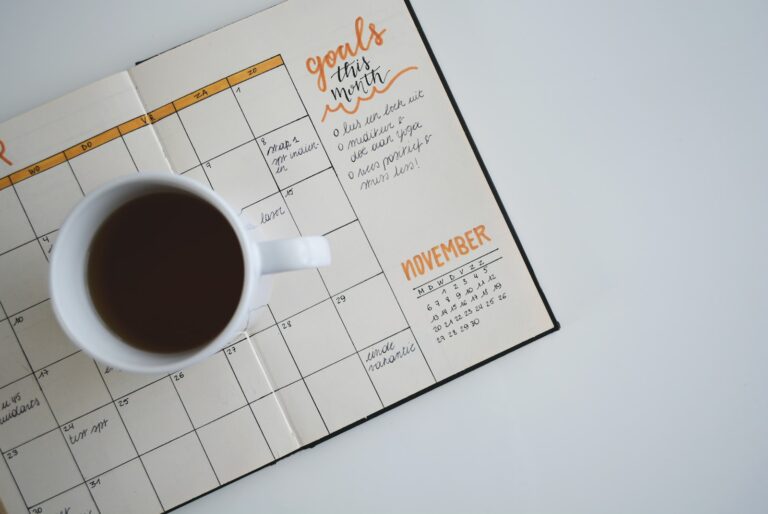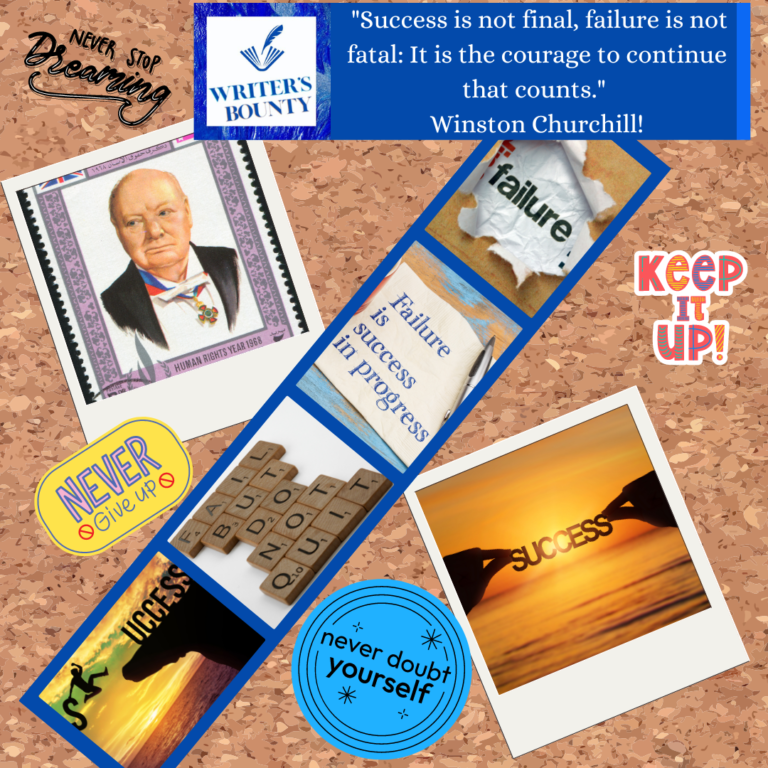Master the Craft: Page-Turning Plots that Hook Readers
We’re here to dive deep into the intricate world of storytelling and discover the secret ingredients that make up page-turning, impossible-to-put-down plots. As we navigate through this maze, we will unravel how suspense weaves its magic, why character development is integral, how pacing sets the tempo, and why conflict is the fuel that ignites the plot.

The Enthralling World of Suspense
Unraveling the Magic of Suspense
Suspense is that spine-chilling, nail-biting feeling that keeps us clinging to the edge of our seats. It’s the tantalizing taste of anticipation, the delightful fear of the unknown. The suspense in a story stirs up our curiosity, fuels our imagination, and triggers our deepest fears and desires. It’s that ‘what happens next’ thought that lingers in our minds, making it impossible to let go of the book.
Building Blocks of Suspense
Suspense is not a single thread but a web intricately woven using various storytelling elements. They include dramatic tension, narrative pace, mood and atmosphere, foreshadowing, and surprise. In the following sections, we’ll go through each of these elements in detail and understand their role in crafting suspenseful plots.
Dramatic Tension
Dramatic tension is the conflict within a character or between characters. It’s the root from which suspense sprouts. To create dramatic tension, we need to develop multi-dimensional characters with wants, needs, flaws, and fears, and then we must pit these characters against each other or against themselves.
Narrative Pace
Narrative pace is the speed at which a story progresses. A fast pace keeps readers on their toes, while a slow pace allows them to ponder, question, and dread. Controlling the narrative pace can manipulate how readers perceive the buildup of suspense.
Mood and Atmosphere
The mood and atmosphere of a story set the emotional tone and background, respectively. Together, they lay the foundation for suspense. A dark, gloomy atmosphere can create a sense of impending doom, while a light, cheerful mood can enhance the shock value when things take a turn for the worst.
Foreshadowing
Foreshadowing is a hint or a clue about a future event in the story. It’s a promise that something exciting, dangerous, or surprising is about to happen. The anticipation of this event is what keeps readers hooked.
Surprise
Surprise is an unexpected twist or turn in the story. It’s the payoff for the buildup of suspense. The unpredictability of the surprise is what makes suspense so enticing.
Writing Suspense: Step by Step Guide
To write suspense, we need to:
- Create compelling characters: Characters that readers can connect with and root for.
- Establish stakes: What does the character stand to gain or lose? The higher the stakes, the higher the suspense.
- Plant hints: Drop hints about future events to keep readers on the edge.
- Maintain uncertainty: Keep readers guessing about what’s going to happen next.
- Delay resolution: Procrastination can sometimes be a good thing. By delaying the resolution, we can prolong the suspense and keep readers engaged.
If you want to add more emotion overall to your work, check our article “Mastering Emotional Impact in Storytelling: The Ultimate Guide to Captivating Audiences.“
Incorporating Suspense Across Genres
Suspense isn’t just limited to thrillers and mysteries; it’s a universal element that can be incorporated into any genre. In romance, suspense could be the tension between the lead characters, or the question of whether they will end up together. In fantasy, it could be the journey to defeat the dark lord, with various obstacles along the way. The beauty of suspense is in its versatility.

The Essentiality of Engaging Characters
Why Characters Matter
Stories are about people, or at least, they’re about characters. The characters are the ones who move through the plot, face the conflicts, and ultimately, grow and change. Without characters, a plot is just a series of events, but with characters, a plot becomes a story.
Creating Three-Dimensional Characters
To create engaging characters, we need to make them three-dimensional. This means giving them depth and complexity, just like real people. A three-dimensional character has strengths and weaknesses, dreams and fears, and past experiences that have shaped them. They are not just good or bad; they are a mix of both, which makes them relatable and believable.
Character Backstory
Every character has a backstory, a history that has shaped their personality and behavior. The backstory explains why a character is the way they are. It gives context to their actions and decisions, making them more understandable and sympathetic to the reader.
Character Motivation
Every character wants something, whether it’s a tangible goal like a treasure, or an intangible one like love or acceptance. This want, or motivation, drives the character’s actions and decisions. It’s what propels them through the plot and towards the conflict.
Character Flaws
Nobody is perfect, and neither should our characters be. Character flaws make characters human and relatable. They create internal conflicts, add layers to the character’s personality, and provide opportunities for character growth and development.
Character Arcs: The Journey of Change
A character arc is the journey of transformation that a character undergoes throughout the story. It’s the path from who they were at the beginning of the story to who they become at the end. The character arc is a crucial component of the plot, as it is the emotional and psychological journey that keeps readers engaged.
If you need help deciding which is more important in your specific story, read our article “Plot vs. Character: Which Drives Your Story?“
Setting the Tempo: The Art of Pacing
The Rhythm of Storytelling
Pacing is the rhythm of storytelling. It’s how fast or slow the story unfolds. It’s the heartbeat of the plot that keeps readers engaged. Good pacing is like a well-timed piece of music – it has highs and lows, fast sections and slow sections, all perfectly balanced to create a harmonious melody.
The Pulse of Pacing
The pacing of a story is its pulse, its heartbeat. When the pacing is off, readers can feel it. They might lose interest, or feel rushed and confused. But when the pacing is just right, readers are engaged and invested. They feel the urgency in the action scenes, the depth in the emotional scenes, and the tension in the suspenseful scenes. The pacing guides their reading experience, shaping how they perceive and respond to the story.
Balancing Fast and Slow Pacing
A well-paced story has a balance of fast and slow-paced scenes. Fast-paced scenes are full of action and dialogue, moving the plot forward and keeping readers engaged. Slow-paced scenes, on the other hand, dive deeper into characters’ thoughts and emotions, providing much-needed breathing space and allowing readers to digest the events of the story.
Controlling Pacing: Tools and Techniques
Pacing is controlled through a variety of storytelling techniques, including sentence length, paragraph length, chapter length, dialogue, action, description, and exposition. By mastering these tools, we can manipulate the pacing of our story, controlling how fast or slow the story unfolds and keeping our readers engaged.

Conflict: The Fuel of the Plot
Why Conflict Matters
Conflict is the engine that drives the plot. Without conflict, a story is just a sequence of events without any purpose or direction. Conflict creates tension, raises stakes, and pushes characters out of their comfort zones. It’s what forces characters into action, propels them towards their goals, and ultimately, leads them to growth and change.
Types of Conflict
There are several types of conflict in storytelling, including character vs. character, character vs. self, character vs. society, character vs. nature, and character vs. fate. Each type of conflict presents different challenges for the character and offers different opportunities for plot development.
Character vs. Character
Character vs. character conflict is a clash between two characters. It could be a physical fight, a verbal argument, or a competition. This type of conflict creates drama and tension, and often leads to exciting, suspenseful plots.
Character vs. Self
Character vs. self conflict is an internal struggle within a character. It could be a moral dilemma, a personal insecurity, or a traumatic past. This type of conflict adds depth to the character, and often leads to introspective, character-driven plots.
Character vs. Society
Character vs. society conflict is a clash between a character and the norms and expectations of society. It could be a fight for justice, a rebellion against oppression, or a quest for acceptance. This type of conflict raises social issues, and often leads to thought-provoking, socially-conscious plots.
Character vs. Nature
Character vs. nature conflict is a battle between a character and the forces of nature. It could be a survival story against natural disasters, a struggle against a deadly disease, or a journey through a hostile environment. This type of conflict explores the primal, survival instincts of characters and often leads to thrilling, adventure-driven plots.
Character vs. Fate
Character vs. fate conflict is a fight against destiny. It could be a prophecy foretelling doom, a curse that needs to be broken, or a predetermined fate that the character tries to change. This type of conflict delves into themes of fate vs free will, and often leads to epic, larger-than-life plots.
Crafting Conflict: A Step by Step Guide
- Identify the conflict type: Decide which type of conflict best suits your story and characters.
- Raise the stakes: Make sure the conflict matters to your characters and, by extension, to your readers.
- Intensify the conflict: Make the conflict harder and harder for your characters to overcome.
- Resolve the conflict: Provide a satisfying resolution that aligns with the story’s themes and characters’ arcs.

Mastering the Twist: Surprises and Revelations
The Power of Surprise
Surprise is the secret sauce that keeps readers turning the pages. It’s the unexpected twist that shocks readers, the revelation that makes them gasp, the sudden turn of events that leaves them in awe. Surprise adds spice to the plot, making it unpredictable and exciting.
Crafting Surprises: Techniques and Tips
To craft effective surprises, we need to:
- Lay the groundwork: Plant clues and hints that, in hindsight, make the surprise feel earned.
- Misdirect the reader: Use red herrings to lead readers on a false trail, thereby increasing the shock value of the surprise.
- Time it right: Timing is key when it comes to surprises. Too early, and the surprise may lose its impact. Too late, and it may feel rushed or unearned.

Crafting Page-Turning Plots: Understanding Story Structure
The Anatomy of a Story
At its most basic level, a story consists of a beginning, middle, and end. However, a compelling story usually follows a more complex structure, with key elements including exposition, inciting incident, rising action, climax, falling action, and resolution.
Exposition: Setting the Stage
The exposition introduces the main characters, setting, and initial situation of the story. It’s the foundation upon which the rest of the story is built. A strong exposition hooks readers’ attention, makes them care about the characters, and immerses them in the story world.
Inciting Incident: The Spark That Ignites the Plot
The inciting incident is the event that kick-starts the plot. It’s the point of no return for the main character, the event that thrusts them into the main conflict of the story.
Rising Action: The Road to the Climax
The rising action consists of a series of events that increase tension, introduce obstacles, and build up to the climax. It’s the heart of the story, where characters are tested, conflicts are intensified, and stakes are raised.
Climax: The Turning Point
The climax is the most intense, exciting, or important point of the story. It’s the turning point, where the main character faces the main conflict head-on and the outcome of the story is decided.
Falling Action: The Aftermath
The falling action is what happens after the climax. It’s the aftermath of the main conflict, where loose ends are tied up, secondary conflicts are resolved, and characters deal with the consequences of their actions.
Resolution: The End of the Journey
The resolution is the end of the story. It’s where the story wraps up, providing closure for the characters and the readers. The resolution leaves a lasting impression on readers, and thus, should be satisfying and fitting to the story.

Harnessing the Power of Dialogue
The Role of Dialogue
Dialogue is not just words characters say; it’s a powerful storytelling tool. It reveals character traits and relationships, advances the plot, provides exposition, and sets the mood and tone of the story.
Writing Authentic Dialogue
Writing dialogue is an art. It requires an ear for speech patterns, a sense for character voice, and a feel for pacing and timing. Here are some tips to craft authentic dialogue:
- Character Voice: Each character should have a unique voice that reflects their personality, background, and emotions.
- Realistic Speech Patterns: Dialogue should mimic real-life speech patterns, but be more streamlined and focused.
- Subtext: What characters don’t say is as important as what they do say. Subtext adds depth and realism to dialogue.
- Advancing the Plot: Dialogue should always serve a purpose, whether it’s to advance the plot, reveal character, or provide information.
- Avoiding Info Dump: Information should be revealed through dialogue in a natural, subtle way, not dumped all at once.
For help polishing your dialogue skill, read “Mastering Dialogue: Techniques for Writing Authentic, Believable Dialogue that Moves the Story Forward.”

The Art of Show, Don’t Tell
What is Show, Don’t Tell?
“Show, don’t tell” is a writing principle that encourages writers to illustrate a scene through action, words, thoughts, senses, and feelings rather than through expository description. It makes the writing more vivid and engaging, allowing readers to experience the story through the characters’ perspectives.
How to Show, Not Tell
Here are some techniques to apply the “show, don’t tell” principle:
- Use Sensory Details: Engage the five senses to create a vivid, immersive scene.
- Describe Actions: Show what the characters are doing, not just what they’re thinking or feeling.
- Reveal Character Through Dialogue: Use dialogue to reveal character traits, relationships, and emotions.
- Employ Figurative Language: Use metaphors, similes, and other figurative language to illustrate abstract ideas in a concrete, visual way.
Want to really spice up your descriptions? Check out “How to Rock Vivid Descriptions.”

Deepening Characterization
Why Characterization Matters
Characterization is the process of conveying information about characters to readers. It is vital because believable, relatable characters can carry a story, no matter the plot. If readers care about the characters, they will want to know what happens to them, creating emotional engagement that keeps them turning the pages.
Building Layered Characters
Creating well-rounded, three-dimensional characters requires attention to the following elements:
- Backstory: The character’s past shapes their personality, motivations, and reactions.
- Goals: What does the character want more than anything? Goals drive the character’s actions and the story’s plot.
- Motivation: Why does the character want what they want? Understanding motivations can help make characters’ actions and reactions plausible and emotionally resonant.
- Conflict: How does the character’s goal conflict with other characters’ goals or with their own internal struggles? Conflict creates tension and propels the plot forward.
- Growth: How does the character change over the course of the story? Character growth (or lack thereof) contributes to the story’s themes and emotional impact.

The Importance of Themes
What is a Theme?
A theme is a central idea or message in a story. It’s not the plot (what happens) or the premise (the basic setup), but the deeper meaning that the story explores. Themes can illuminate truths about the human condition, provoke thought, or impart morals or messages.
Incorporating Themes
To weave themes into a story, consider the following:
- Character Arcs: How can characters’ growth or change illustrate the theme?
- Plot Events: How can the things that happen in the story reinforce the theme?
- Symbolism and Motifs: Can recurring symbols or motifs underscore the theme?
- Dialogue: Can discussions between characters highlight aspects of the theme?
Creating Compelling Settings
The Role of Setting
Setting is more than just the physical location where the story takes place. It includes the time period, the culture, the weather, and the atmosphere. A well-crafted setting can ground the story, influence the plot, reveal character, enhance the theme, and evoke mood.
Building Vivid Settings
To create vivid, believable settings, consider the following:
- Sensory Details: Use the five senses to make the setting come alive. What do characters see, hear, smell, taste, touch?
- Cultural and Social Context: Consider how the social norms, customs, and values of the setting affect characters and plot.
- Historical or Temporal Context: Consider how the time period impacts the characters’ beliefs, attitudes, and conflicts.
- Emotional Connection: Use the setting to reflect or contrast with characters’ emotions.
If you’re trying to craft a new world for your story, check out “World Building 101: How to Transport Your Readers to Another Realm.”
Or, if you’d just like to read about some of my favorite settings, read “5 Places I Love for Book Settings.”
Effective Foreshadowing
What is Foreshadowing?
Foreshadowing is a technique in which a writer gives an advance hint of what is to come later in the story. It creates suspense and makes the narrative more satisfying by making future events feel earned.
Techniques of Foreshadowing
- Direct Foreshadowing: Characters make explicit predictions or warnings about the future.
- Indirect Foreshadowing: Subtle hints are planted through descriptions, dialogue, or the actions or reactions of characters.
- Symbolic Foreshadowing: Objects, events, or characters symbolize or hint at future events.
Foreshadowing should be used sparingly and subtly, or it can seem heavy-handed and rob the plot of suspense.
Incorporating Subplots
What Are Subplots?
Subplots are secondary plots that run alongside the main plot. They provide a deeper understanding of the story, characters, and themes. They can create contrast or echo the main plot, add variety and pace, and make the story world feel richer and more realistic.
How to Weave in Subplots
Consider these points while incorporating subplots:
- Relevance: Subplots should be relevant to the main plot or theme, providing contrast or reinforcement.
- Variety: Subplots can bring variety to the story, in terms of tone, pace, or point of view.
- Integration: Subplots should be smoothly integrated into the main plot, with clear connections between them.
The Craft of Endings
Why Endings Matter
The ending is the last impression you leave with your readers. A strong, satisfying ending can make the difference between a forgettable story and one that lingers in readers’ minds.
Crafting Effective Endings
Consider these strategies for crafting effective endings:
- Resolution: Tie up loose ends and resolve the main conflict. Leave no significant unanswered questions (unless you’re writing a series).
- Character Arc: Show how the main character has changed or grown over the course of the story.
- Theme: Reiterate or reveal the story’s theme or message.
- Emotional Impact: Aim for an emotional payoff that fits the story.
Revision: The Final Frontier
The Necessity of Revision
The first draft is just the beginning. Revision is where the real magic happens. It’s the process of reseeing and refining your story to make it the best it can be. During revision, you can address plot holes, deepen characters, clarify themes, enhance settings, and polish your prose.
Effective Revision Techniques
Here are some strategies for effective revision:
- Take a Break: Distance can give you fresh eyes to see what’s working and what’s not.
- Read Aloud: Reading aloud can help you catch awkward phrasing, redundancy, and errors.
- Seek Feedback: Fresh perspectives from beta readers or critique partners can identify blind spots.
- Focus on Big Picture First: Address issues with plot, character, and structure before refining language and style.
- Revise in Passes: Trying to fix everything at once can be overwhelming. Consider focusing on one aspect at a time.
If editing is more of an issue for you, check out “Killer Tips for Editing that Really Work.”

Frequently Asked Questions About Crafting Page-Turning Plots

Final Thoughts on Crafting Page-Turning Plots
In the world of writing, crafting a page-turning plot is both an art and a science. It’s about understanding your characters deeply, choosing settings that enhance your story, building tension and suspense, and delivering a satisfying ending. But perhaps the most important thing is to write with passion and authenticity. The heart of any story is the connection between the writer, the characters, and the readers. If you write with genuine emotion and insight, you’ll create a plot that not only hooks your readers but also resonates with them long after they’ve turned the last page.












One Comment
Comments are closed.